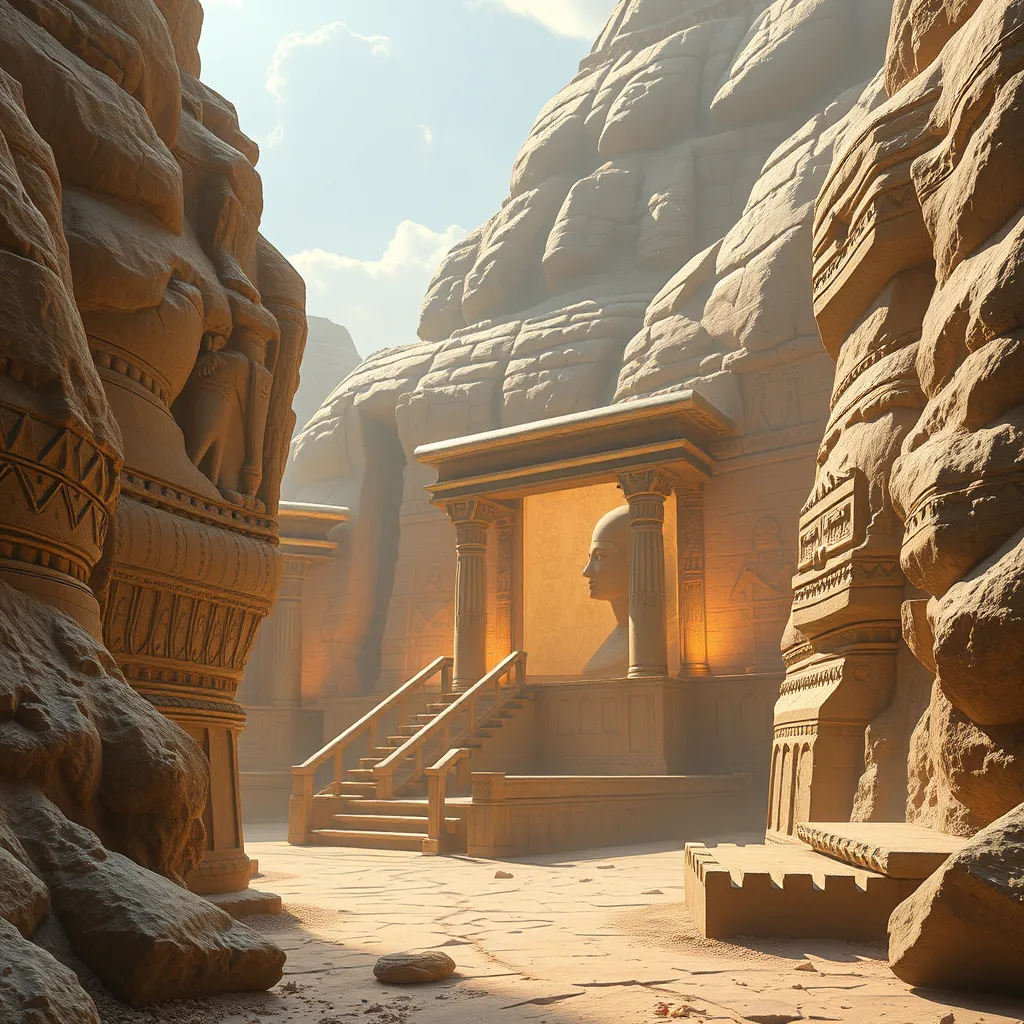The Duat: A Journey Through Time and Space
I. Introduction to the Duat
The Duat, often referred to as the Egyptian Underworld, is a significant concept in ancient Egyptian mythology. It represents a mystical realm where souls journey after death, navigating through various trials and encountering gods and spirits. This article aims to explore the Duat’s significance in ancient Egyptian beliefs, its historical context, and its enduring legacy in modern culture.
II. Historical Context of the Duat
The origins of the Duat can be traced back to the early dynastic period of ancient Egypt, where it was first depicted in funerary texts and tomb art. Over time, the concept evolved, reflecting changes in religious beliefs and practices across different dynasties.
- Early Dynasties: The Duat was initially a shadowy realm, a place of darkness associated with chaos.
- Middle Kingdom: Beliefs became more structured, with detailed maps of the Duat and descriptions of its challenges.
- New Kingdom: The Duat was integral to the Osirian mythos, emphasizing resurrection and eternal life.
Key archaeological findings, such as the Pyramid Texts and Coffin Texts, have provided insights into the nature of the Duat and its importance in funerary practices, illustrating how the ancient Egyptians prepared for the afterlife.
III. The Structure of the Duat
The Duat is often depicted as a complex domain comprising various realms and landscapes. Each section of the Duat serves a specific purpose in the journey of the deceased.
- Various Realms: The Duat includes fields of reeds, lakes of fire, and dark caverns, each representing different stages of the soul’s journey.
- Underworld Significance: The Underworld was seen as a necessary passage for the soul to achieve immortality, symbolizing the cycle of death and rebirth.
- Landmarks and Creatures: Key landmarks include the Hall of Two Truths and the Lake of Fire, while mythological creatures like the serpent Apep embody chaos and threats to the soul.
IV. The Journey Through the Duat
The journey through the Duat is a critical aspect of the afterlife experience for the ancient Egyptians. The deceased were believed to face numerous trials as they navigated this realm.
- Role of the Deceased: The soul, often represented as a barque (boat), had to traverse the Duat, guided by various deities.
- Trials and Challenges: Souls encountered obstacles such as mythical beasts and treacherous landscapes, testing their worthiness for eternal life.
- Weighing of the Heart: One of the most significant ceremonies, where the heart of the deceased was weighed against the feather of Ma’at, the goddess of truth. A heart lighter than the feather indicated a virtuous life, granting access to eternal bliss.
V. Deities and Spirits of the Duat
The Duat is populated by numerous deities and spiritual beings, each playing a vital role in the journey of the deceased.
- Key Deities:
- Osiris: The god of the afterlife, overseeing the judgment of souls.
- Anubis: The jackal-headed god responsible for mummification and guiding souls through the Duat.
- Protective Spirits: Deities such as Thoth and Horus provided guidance and protection for souls navigating the Duat.
- Myths and Stories: Numerous myths illustrate the interactions between gods and souls, emphasizing themes of resurrection and justice.
VI. Symbolism and Art in the Duat
The Duat has been a significant source of inspiration for ancient Egyptian art, reflecting the culture’s beliefs and values.
- Artistic Representations: The Duat is depicted in tomb paintings, papyrus scrolls, and sarcophagi, often illustrating the journey of the deceased.
- Symbolic Meanings: Elements such as the ankh (symbol of life) and the scarab (symbol of rebirth) hold deep symbolic significance within the context of the Duat.
- Influence on Later Traditions: The imagery and themes of the Duat have influenced various artistic and literary traditions, from Greco-Roman interpretations to modern fantasy works.
VII. Modern Interpretations and Cultural Impact
In contemporary culture, the Duat continues to captivate imaginations and inspire various forms of expression.
- Contemporary Perception: The Duat is often referenced in discussions of ancient Egyptian mythology, attracting interest from historians and enthusiasts alike.
- Influence on Modern Media: Literature, film, and art frequently draw upon themes from the Duat, reinterpreting its mythology for new audiences.
- Relevance in Afterlife Discussions: The Duat serves as a point of reference in modern discussions about life after death, spirituality, and existential beliefs.
VIII. Conclusion: The Legacy of the Duat
The Duat remains an integral part of ancient Egyptian culture and belief systems, symbolizing humanity’s quest for understanding the afterlife. Its complexity and richness continue to fascinate scholars and the general public alike, reflecting a timeless intrigue with death and immortality.
As we explore the Duat’s significance, we are reminded of the universal themes of life, death, and rebirth that resonate across cultures and time. The journey through the Duat, filled with trials and divine encounters, serves as a profound metaphor for the human experience, making it a legacy that endures through time and space.




